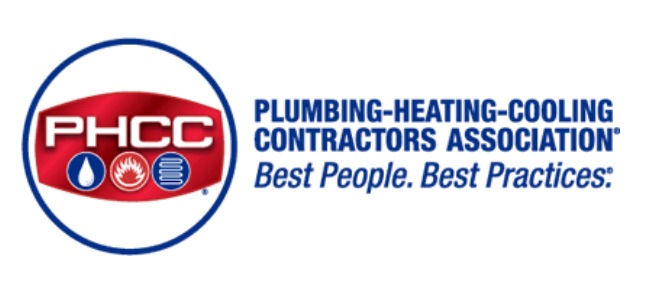Though it’s not commonly taught, your indoor air quality matters. There are many things you can do to enhance it. In order to improve your home’s environment and breathe easier, consider the following tips.
1. Use Measuring Tools
When it comes to the air in your home, it’s invisible. You can’t see whether the air is dirty. The only way you’ll know is by the physical reaction that you have to the air or by a certain odor. However, even when it comes to odors, there’s a concept called nose blindness. When you’ve experienced nose blindness in your home, you’re immune to any offensive odors that are regularly present in the air. This is why it’s best to invest in measuring tools to help you know when the indoor air is of great quality or not. There are two tools you’ll particularly want to invest in.
For starters, consider purchasing a hygrometer. It is beneficial for measuring the amount of humidity in the air. If you have too much humidity, this can lead to the spread and growth of mold, mold spores and bacteria. If you don’t have enough humidity in the air, this leads to dryness. Dry air can exacerbate issues related to nosebleeds, asthma and other respiratory issues.
In addition to investing in a hygrometer, consider purchasing an indoor air quality monitor. The indoor air quality monitor will definitely tell you about the humidity in the air. However, it takes it a step further and measures carbon dioxide, temperature and volatile organic compounds (VOCs).
2. Keep Tabs on the Moisture Levels
Once you’ve invested in a hygrometer or an indoor air quality monitor, you’ll be able to see whether there’s too much moisture and humidity in your home. If this is the case, you’ll want to invest in a dehumidifier in order to address the issue promptly. Dehumidifiers are particularly helpful in areas like basements, bathrooms, and kitchens. If you don’t spend a lot of time in your basement, it can be easy for humidity to reach dangerous levels without you realizing it. In addition to keeping a monitor in the basement, it’s always wise to make frequent visits to different areas of the home that typically go untouched. This will help you stay on top of issues before they become costly and dangerous.
Another way to control the moisture in your home is to keep an eye out for leaks. If you have cracks and leaks in any area of your home, this can lead to the spread and growth of mold, bacteria and mildew. These bacteria are very dangerous to inhale and live with. This is why it’s best to keep the humidity between 30 and 50%.
3. Cultivate a Green Thumb
Transpiration is the process by which plants release moisture into the air. This natural process not only benefits the plants themselves but can also have positive effects on indoor air quality. Larger spaces may benefit from having more plants to achieve a noticeable effect.
Certain plants are particularly effective at improving indoor air quality. Examples mentioned include peace lilies, spider plants, and aloe plants. These plants are known for their air-purifying properties.
While you don’t need to turn your space into a jungle, it’s suggested to consider adding extra plants, especially if the room’s square footage is over 500 feet. For those who may not have a green thumb, selecting low-maintenance plants is a wise choice. These plants are easier to care for and can still provide air-purifying benefits.
Speaking to a botanist or plant care specialist can be valuable for learning how to properly care for indoor plants. This ensures that the plants remain healthy and continue to contribute to improved air quality.
4. Maintain Proper Ventilation Practices
Start by opening the windows a few times a week, if not daily. Do this for at least 15 minutes at a time. Allowing fresh air to circulate helps maintain indoor air quality and reduces the likelihood of “nose blindness.” If you have seasonal allergies, be mindful of outdoor allergens and adjust the frequency of window openings accordingly.
Invest in a really good air purifier. Choose an air purifier with HEPA filters to actively remove contaminants from the air. When it’s time to cook, turn on the exhaust fan in the kitchen. Especially when using the stovetop, turn the exhaust fan on to eliminate pollutants generated during cooking. Another place to use an exhaust fan is the bathroom. Use the exhaust fan in the bathroom when taking a shower to remove excess moisture and prevent the growth of mildew and mold. Keep bathroom doors open to facilitate air circulation and prevent moisture buildup.
Implementing these practices can significantly contribute to maintaining good indoor air quality, preventing the accumulation of pollutants, and reducing the risk of issues associated with excess moisture. Proper ventilation is essential for creating a healthy and comfortable indoor environment.
5. Prioritize Cleanliness
Maintaining cleanliness is paramount to making sure the indoor air is of great quality. If you’re not the most organized in the cleanliness department, it’s time to create systems that help you keep your home clean on a consistent basis. Start by maintaining a system of taking your shoes off when you enter the home, as shoes touch everything everywhere when you’re outside. With so much exposure to a myriad of bacteria, it’s best to decrease the spread of it by taking your shoes off at the front door. When you have guests over, you can offer socks or slippers in order to help them feel more comfortable about taking their shoes off.
Another way to promote cleanliness at home includes maintaining a system. If you’d like to have a cleaning professional come through and clean your home on a consistent basis, that’s a great start. However, if you simply take the time to vacuum and clean your floors on a consistent basis, this will be a great start. Another habit to include involves prioritizing the removal of dust. Clean all the countertops and spaces where dust and bacteria can collect. If you do this once a day, you’ll be on your way to maintaining a clean home that helps to improve the quality of your indoor air.
6. Maintain Your HVAC System
Your HVAC system is responsible for pumping out the air that goes throughout your home. During the colder months, you’re typically turning on the heat. During the warmer months, you’re typically pumping out cool air to keep your home comfortably cool. As you push out the air, it comes through your air filters. Those air filters need to be changed on a consistent basis. Typically, it’s recommended that you change your air filters once every 90 days. If you have pets or allergies, you’ll want to increase the frequency of your air filter changes. When your air filters become clogged, this makes the HVAC system work harder. As a result, you’ll end up having to pay more for the energy that your system had to put out.
Also, maintenance matters. Connecting with your local HVAC professionals can make a major difference in your indoor air quality because they’ll be able to make sure your HVAC system is working at peak performance. They’ll also be able to catch any repairs that need to be taken care of. If a certain component of the system needs to be cleaned, this can be done by a professional. When they take care of it, they’ll have the eye to see when something’s about to go wrong and how you can be proactive in making sure you stay on top of your maintenance and repairs.
Get Professional Help
As you work to maintain the quality of your indoor air, Meade’s Heating and Air is able to offer services in the areas of indoor air quality, heating and cooling. Contact us today to learn more about our services!




